I made a peanut noodle salad for a potluck luncheon last Saturday and ended up with about a pound leftover cilantro. There were a lot of stems with little root portions attached and immediately, my mind went to something Thai. In particular, this spicy mixture which I’ve been making since the early 1990s. The original recipe came from Nancie McDermott’s handy Real Thai cookbook. There’s no chile because as Nancie wrote, this is an old style seasoning mixture that the Thais used in cooking before chiles arrived in Southeast Asia. The heat came from peppercorns and garlic. Everything was pounded in a mortar and pestle until smooth.
This week, decided to use both kinds of peppercorns and add coriander seed. I took the lazy day route and pounded the spices in a food processor along with several heads of garlic and a sizeable amount of cilantro. I whirled it all up with a touch of oil into a somewhat coarse, slightly creamy mixture. I had roughly 1 ½ cups (360 ml) at the end.
I scaled back on the garlic but the flavor was pretty strong nevertheless. There’s usually no oil so it’s not a true Italian pesto, and not a chimichurri either. I wouldn’t dip foods into it. It’s a bold seasoning to keep around. You may be able to freeze it too.
What do with the pesto? Within the span of 24 hours, I came up with these ideas.
Cucumber and Cilantro Pesto Salad – A variation on Chinese smacked cucumber salad. Cut up 2 Japanese cucumbers, 3 Persians, or 1 English cucumber into pinkie-finger length sections. Smack each with your hand or a knife to crush open and expose the seeds. Put into a bowl and toss with sprinkles of salt and sugar. Wait 15 minute to let things weep liquid. Rinse and drain, the toss with a teaspoon of the pesto (or more) and a light drizzle of neutral oil. Serve slightly chilled. This is garlicky so watch out if you’re on a date. Try this with potato salad. I think it may be good.
Shrimp, Pork and Vegetable Stir-Fry – It was sweltering last night so to lend pep to our stir-fry, I added a spoonful of the pesto toward the middle. The aim was to aromatize and cook the garlic. Very nice flavor. This could be done with other stir-fries where you feel a touch of herb and spice may help.
Pork and Bamboo Red Curry – I often tweak storebought Thai curry pastes with extra aromatics to make them more lively. For this curry, I added galangal but wondered what would happen with the pesto added too? The garlic, peppercorns and coriander seed turned the curry into something new and unexpectedly wonderful. Usually, I add palm sugar to balance things out but I didn’t have to after I added the pesto. Instead of my usual Thai red curry, there was a surprise.
Grilled Chicken – Chopped leg and thigh quarters got marinated in the pesto along with fish sauce. For 4 pounds (2 kg) of chicken, I used ¾ cup (180 ml) of the pesto and 2 tablespoons fish sauce; make sure the seasonings get under the skin. Rory grilled the chicken pieces and we ate it with Thai sweet chile sauce and squirts of lime juice. It was very good.
Burgers -- John Martin on Facebook suggested slathering the pesto on a burger. I bet it would be pretty good as a seasoning or coating while the burger cooked.
So if you have a lot of cilantro on hand, make this pesto. (I've used up over half of mine.) Also consider ideas by folks on the VWK Facebook page:
- Afghani Cilantro Chutney – from Alex Khan, this includes walnuts too to add richness
- Indian Green Lamb Curry – from Jordan Mattes, a glorious dish for a bounty of cilantro, mint and dill
This recipe yields a lot so feel free to make a half or third of a batch.
Recipe
Cilantro and Peppercorn Pesto
Yield: about 1 ½ cups (360 ml)
Ingredients:
- 1 large bunch cilantro (about 5 ounces / 150 g)
- 1 tablespoon black peppercorns
- 1 ½ teaspoons white peppercorns
- 1 tablespoon coriander seeds
- ½ teaspoon fine sea salt
- Peeled cloves from 2 ½ heads of garlic
- 1 to 2 tablespoons neutral oil
Instructions
- Wash and spin the cilantro dry. Coarsely chop and set aside.
- Use a spice grinder or mortar and pestle to reduce the peppercorns and coriander seeds to a coarse texture. Transfer to a food processor and add the salt and garlic. Whirl to chop the garlic. Add the cilantro. Process, adding the oil through the feed tube, to create a relatively smooth texture. Taste and adjust the flavor as needed, though you can adjust things when you actually use the pesto. Transfer to a bowl and use or refrigerate.
Related post: Ways to use up a mess of mint and basil













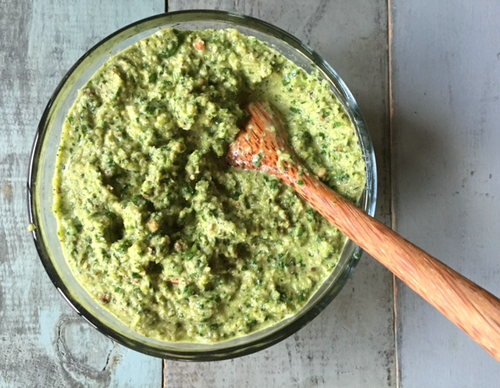
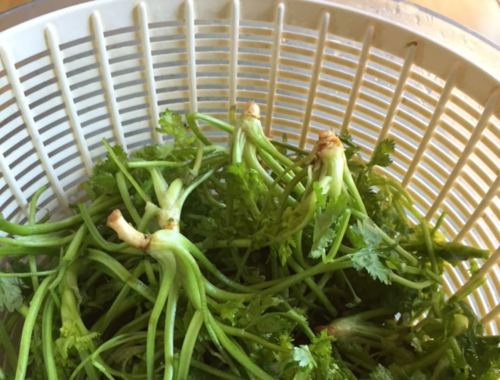
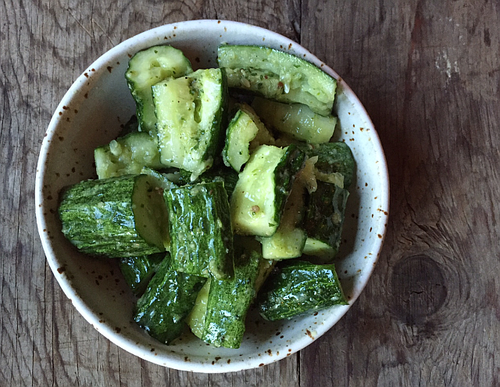
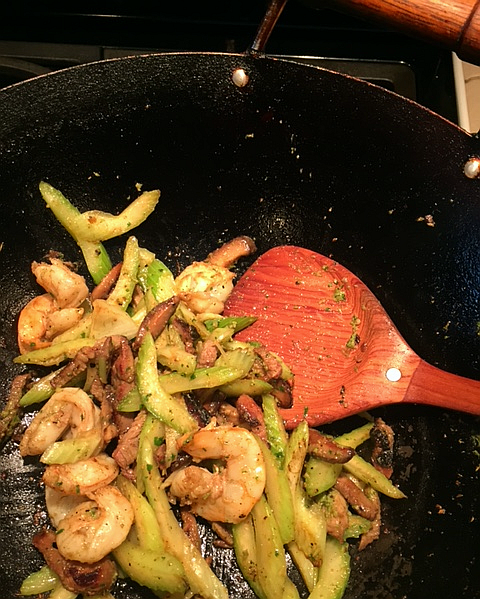
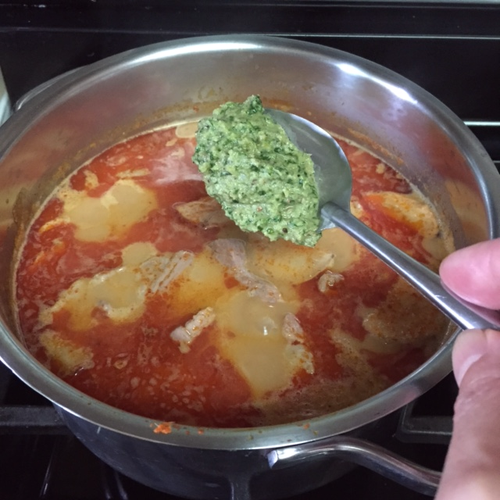
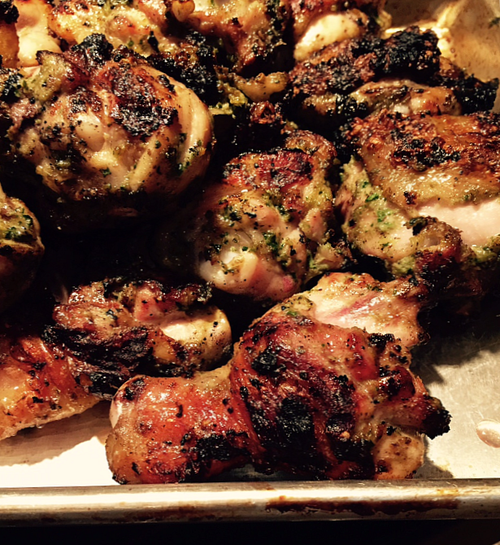




chris 06 says
Bonjour à toi
Je fais beaucoup tes recettes qui sont excellentes, Tu es une championne en cuisine. C'est du bonheur de faire tes recettes car elles sont très bien expliquées.
J'ai apprécié ton article sur les poivres, et j'ai constaté que tu adores ,comme moi,les poivres et la coriandre. J'utilise beaucoup,le poivre à queue,le poivre long,celui de Madagascar( très bon) et mon préféré::le Timut pour les poissons et surtout les crustacés.
Je vais voir si je peux trouver celui de l'île de Phu Q.
En France, nous avons 2 grands spécialistes des poivres.......j'espère
Je me ruine en achats de petits moulins à poivre,pour les avoir sous la main à n'importe quel moment.
Je vais faire ton pesto de coriandre, mais il me faudrait le poids de l'ail,car ici, suivant les qualités, les gousses peuvent être petites ou énormes( j'utilise le violet).
Pour la coriandre, je suppose que tu met les tiges aussi??
En France, on ne la trouve pas avec les racines.
Je regrette beaucoup de ne pas parler anglais pour pouvoir échanger avec toi.
Je t'embrasse affectueusement, et MERCI pour ton magnifique blog. Chris 06